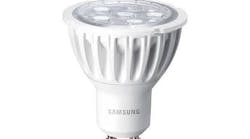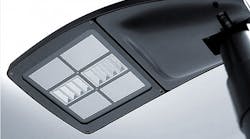Latest from Technology
DOE's latest such report covers solid-state lighting aimed at replacing the halogen MR16. DOE researchers examined 27 LED MR16 lamps and found that although initial performance of LED MR16s has improved, the products on the market still don't match the lumen output or center beam intensity of typical 50W halogen MR16 lamps. In fact, most of the units billed as equivalent to 50W halogens are hard pressed to match the performance of 35W halogen MR16s.
"Notably, no lamp was identified as having high lumen output (500 lm or greater), high CRI (90 or greater), a narrow distribution (15° or less), and an efficacy greater than 60 lm/W. This would be an important achievement for LED MR16s—especially if output could reach approximately 700–800 lm, approximately equivalent to that of a 50 W halogen MR16 lamp," the report said.
All the same, DOE found products from four manufacturers that posted color-rendering index (CRI) figures of 90 or greater, making them good options where good color fidelity is needed, but said the rest of the field had CRI readings in the 80s - good for ambient illumination, not so good for focal lighting.
The DOE report pointed to some of the reasons MR16s have been a difficult product category for LEDs to replace. "LED MR16 lamps require an integral driver, which means that electronic components must be fit into the small, ANSI-defined MR16 form factor. Additionally, low-voltage systems require a transformer and are often coupled with a dimmer. The combination of size limitations and multiple interconnected electronic components may result in compatibility issues, where performance is degraded in one or more areas (e.g., flicker)."
Future CALiPER studies on MR16s will look at system performance, but this one just tested photometric performance of individual lamps, DOE said.
Here's the DOE report (PDF): CALiPER Application Summary Report 22: LED MR16 Lamps












